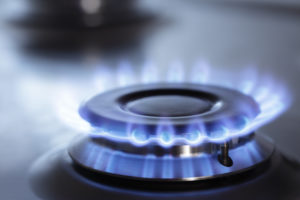 Natural gas rose in early European trading on Thursday as investors braced for what is expected to be a smaller-than-average US inventory build. However, gains are likely to be capped as overnight changes to mid-term forecasts called for a cooler, more comfortable pattern to set up over much of the US in mid-July.
Natural gas rose in early European trading on Thursday as investors braced for what is expected to be a smaller-than-average US inventory build. However, gains are likely to be capped as overnight changes to mid-term forecasts called for a cooler, more comfortable pattern to set up over much of the US in mid-July.
Natural gas for delivery in August traded 1.22% higher at $2.817 per million British thermal units at 08:17 GMT, shifting in a daily range between $2.820 and $2.795. The energy source slid 1.7% on Wednesday to $2.783, snapping two days of gains.
The Energy Information Administration is expected to report today a stockpiles gain of around 70 bcf for the seven days ended June 26th, according to consensus estimates, due to very high natural gas demand through most of the tracked period. This compared to the five-average build of 75 bcf and a gain of 102 bcf during the comparable period last year.
Last Thursdays report showed a build of 75 billion cubic feet in the week ended June 19th, 2 bcf below analysts’ median forecast and well beneath the five-year average gain of 86 bcf. Total gas held in US storage hubs amounted to 2.508 trillion cubic feet, narrowing a surplus to the five-year average stockpiles of 2.473 trillion to 1.4%, or 35 bcf, from 1.9% a week earlier.
However, any upside movement caused by a bullish reading today is expected to be limited by lower national cooling demand to come as the latest weather data shifted to show a cooler pattern in effect for large parts of the US around mid-July.
Several weather systems continue to track across the eastern and central US, carrying showers, thunderstorms and somewhat cooler-than-normal temperatures. The West will remain hot with common highs in the upper 90s and 100s, and locally 110 degrees, which will drive very strong regional demand. The South and Southeast had cooled a bit but will become hotter today and tomorrow, although demand over the remainder of the country is currently not very impressive.
Much of the US will warm-up this weekend through most of next week as high pressure expands out of the West, causing widespread highs in the 80s through 100s that would temporarily boost cooling demand.
However, cooler Canadian weather systems will likely push into the northern and eastern US starting next weekend, setting up a quite comfortable, bearish, mid-summer pattern. The West Coast will also cool as Pacific weather systems arrive, shifting high pressure off the western into the central US, including Texas, which will become the nations new hot spot.
Next weeks inventory report, due out on July 9th, will reflect this week’s comfortable weather across the east-central US, leading to an inventory build exceeding the average, but not by much. Early estimates call for a build of slightly over 85 bcf in the seven days ended July 3rd, compared to the five-year average inventory gain of 75 bcf, while stockpiles jumped by 94 bcf a year earlier.
Readings
According to AccuWeather.com, the high in New York on July 4th will be 79 degrees Fahrenheit, 5 below usual, before jumping to 86 degrees on July 7th and remaining near the average through mid-July. Chicago will fail to exceed 69 degrees today, 15 beneath normal, followed by a warm-up into the mid 70s to low 80s afterwards.
Down South, temperatures in Texas City will peak at 90 degrees today, 1 above usual, and will remain near or slightly above the average through July 10th. To the West, Sacramento will reach 95 degrees tomorrow, 4 above normal, before easing to seasonal over the following week.
Pivot points
According to Binary Tribune’s daily analysis, August natural gas futures’ central pivot point stands at $2.800. In case the contract penetrates the first resistance level at $2.839 per million British thermal units, it will encounter next resistance at $2.895. If breached, upside movement may attempt to advance to $2.934 per mBtu.
If the energy source drops below its S1 level at $2.744 per mBtu, it will next see support at $2.705. In case the second key support zone is breached, the power-station fuel’s downward movement may extend to $2.649 per mBtu.
In weekly terms, the central pivot point is at $2.791. The three key resistance levels are as follows: R1 – $2.848, R2 – $2.927, R3 – $2.984. The three key support levels are: S1 – $2.712, S2 – $2.655, S3 – $2.576.





